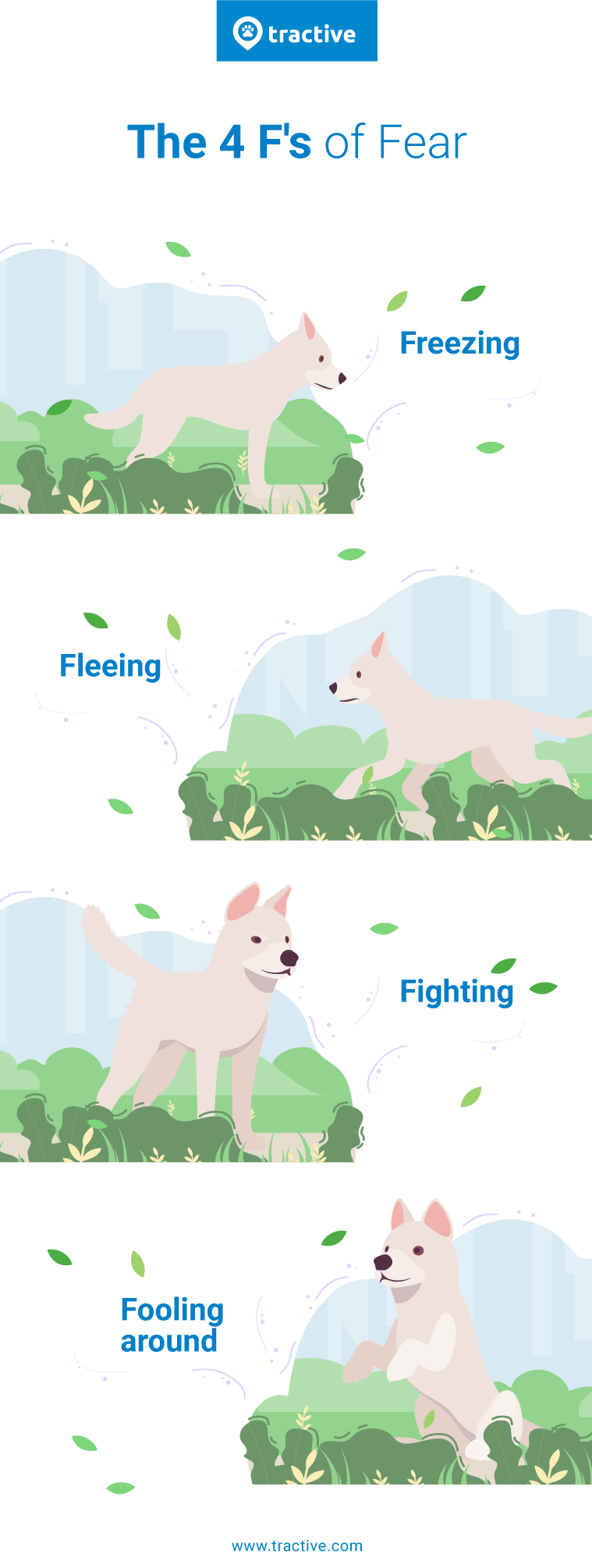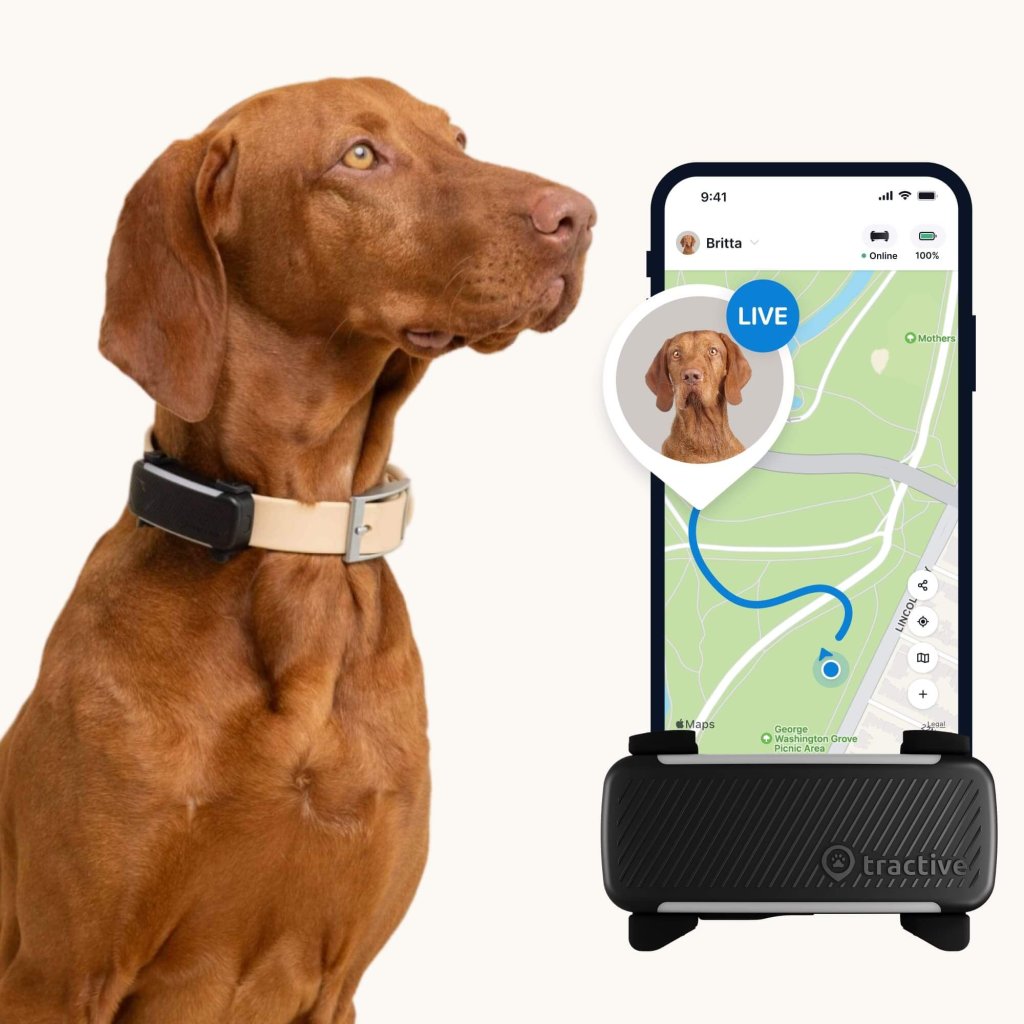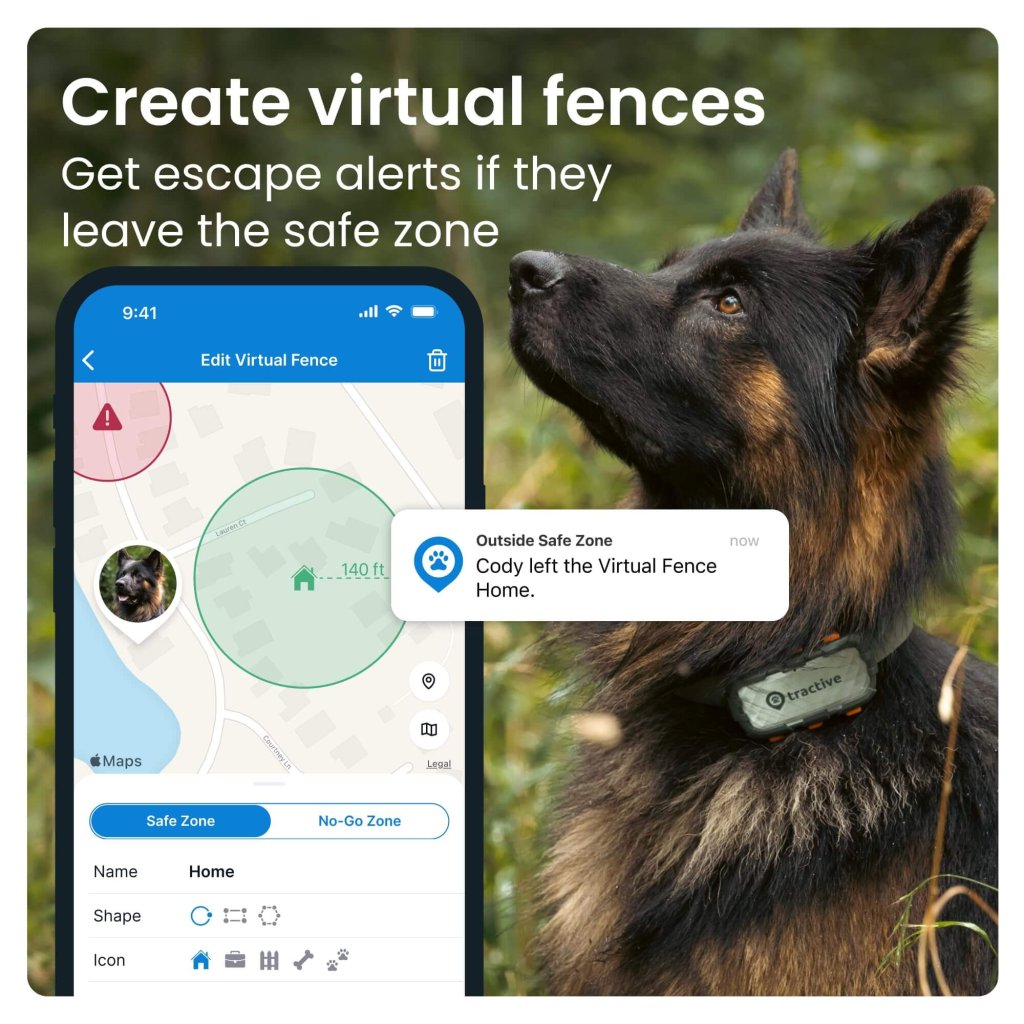Why Do Dogs Run Away [+How To Never Lose Your Dog Again]
Even the best-trained dogs may run away from time to time. Learn the most common reasons dogs run away, from fear to boredom — plus expert tips to prevent it.

It’s every dog parent’s worst fear: calling your pup’s name, only to find they’ve vanished. Whether they’ve squeezed through a fence, bolted from fear, or followed an irresistible scent, runaway dogs are more common than you might think.
So why do dogs run away? The answer can vary from instincts to environmental triggers — but once you understand the cause, you can take steps to prevent it. Here’s everything you need to know.
Key takeaways
- Dogs run away for many reasons — fear, curiosity, boredom, or instinctive behavior.
- Certain breeds like Huskies, Beagles, or Terriers are more likely to roam.
- You can help prevent escapes with secure fencing, proper training, and tools like the Tractive GPS & Health Tracker for dogs.

Find out how your dog spends their time.
Read more6 Common reasons why dogs run away
1) Instincts and natural behavior
Dogs are wired to explore. For some, staying put just isn’t in their nature — especially if they catch an interesting scent or see a critter dart across the yard.
- Exploration and prey drive: Dogs, especially younger ones or those with a high prey drive like Huskies, Beagles, or Terriers, may chase after animals or scents without realizing how far they’ve gone. Their sense of smell is thousands of times stronger than ours, and once they’re in “tracking mode,” it’s hard to break that focus.
- Mating instinct: Unneutered or unspayed dogs are more likely to roam during mating season. The urge to find a mate can override recall training and lead them far from home.
Read more: Everything You Need To Know About A Dog In Heat
2) Fear, anxiety, or trauma
- Loud noises: Fireworks, thunderstorms, or even a vacuum cleaner can send a noise-sensitive pup into a panic. In that moment of fear, their only goal is to escape — even if it means running into danger.
- Separation anxiety: Some dogs can’t bear being left alone. When stressed, they may chew doors, dig under fences, or leap out windows in an attempt to reunite with their human.
- Trauma or PTSD: Rescue dogs or those with a history of abuse may be especially sensitive to unfamiliar situations. Even a well-meaning visitor or change in routine could trigger a flight response.

3) Boredom or lack of stimulation
- Loneliness: Dogs are social creatures. If they’re left alone too long or don’t have enough interaction, they may escape in search of company or fun.
- Not enough exercise: High-energy breeds need physical and mental stimulation every day. Without it, they might turn to digging, jumping fences, or bolting on walks as a way to release pent-up energy.

Keep track of your dog’s daily adventures
Follow every step with unlimited range Live Tracking. Get alerts if they wander too far. Keep them happy & healthy with Activity & Sleep Monitoring. Get Health Alerts if something seems off.
4) Environmental factors
- Poor fencing or open doors: Sometimes, it’s as simple as a gap in the fence or a guest accidentally leaving the door open. During busy times like holidays or gatherings, doors and gates are more likely to be left unsecured.
- Opportunity knocks: Dogs are opportunistic — if they see an open door, they might just take it. That’s why secure environments and supervision are key, especially for escape-prone pups.
5) Health or cognitive issues
- Dog dementia (Canine Cognitive Dysfunction): As dogs age, they can develop cognitive decline, similar to dementia in humans. This may cause confusion, leading them to wander off unintentionally.
- Vision or hearing loss: Older dogs who can’t see or hear well might get disoriented more easily. They may simply follow a path and not realize they’ve gone too far.
6) Reinforced behavior
It was fun the first time: If your dog ran away before and had a “great time” chasing squirrels, meeting new dogs, or exploring a new area, they might try it again. Dogs remember positive experiences — even if they were dangerous. If there were no negative consequences (and especially if they didn’t get hurt or scared), they may see it as a fun adventure.
What to do if your dog runs away?
If your dog runs away, stay calm. it’s important to not panic, as that could just frighten your dog further and make it more difficult for you to find them. Follow these tips as soon as possible to bring a lost dog home safely. Check your home and immediate surroundings. It’s possible your dog might not have escaped too far from home.
How to never lose your dog again
No one wants to go through the stress of a lost dog. Here’s how to reduce the risk and help keep your furry friend safe:
- Use a GPS tracker like the Tractive GPS & Health Tracker for dogs — it can be a lifesaver if your dog does get lost.
- Secure your space: Make sure fences are high enough and gates are closed. Consider coyote rollers or dig-proof barriers for persistent escape artists.
- Spay or neuter your dog: This reduces the urge to roam for mating.
- Provide exercise and enrichment: Walks, puzzle toys, fetch, training sessions — all great ways to burn energy and strengthen your bond.
- Train for recall: Practice the “come” command regularly, with lots of praise and rewards.
- Address behavioral issues: If fear, anxiety, or past trauma is the cause, consider working with a vet or behaviorist.
- Microchip and tag your dog: Always keep your contact info up to date.
Read More: 10 Dogs Whose Lives Were Saved By Tractive

Dogs don’t run away because they’re “bad” — they’re often just following instincts or reacting to stress. With a little patience, training, and the right tools, you can give your dog the freedom they crave without the risk.



